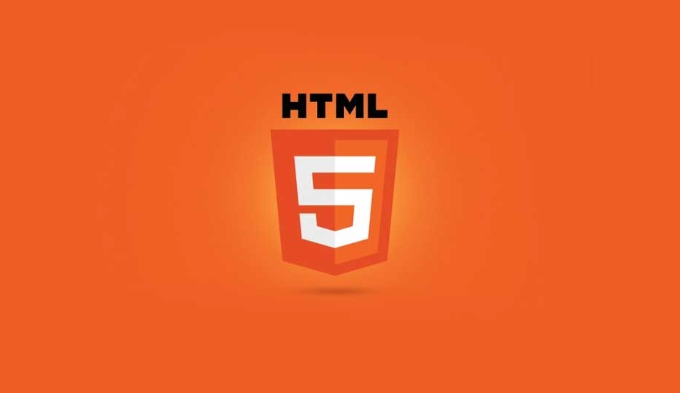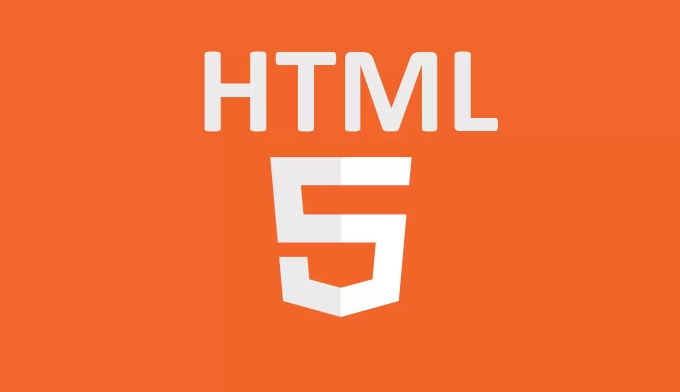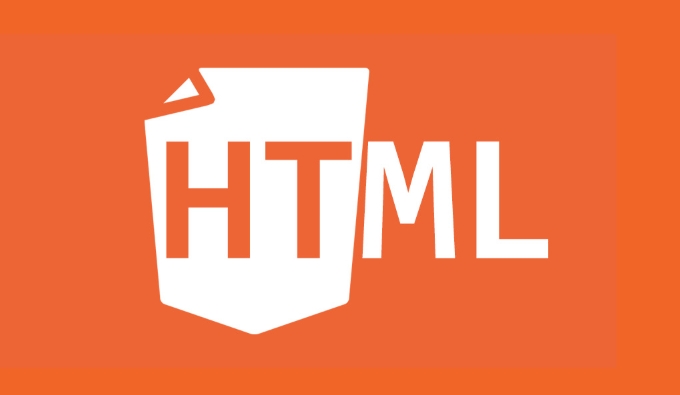The core of H5 page CLS optimization is to ensure stable layout and avoid displacement when elements are loaded. Common problems include unsize images, font rearrangements, advertising pop-ups, etc. High CLS issues can be identified through Chrome DevTools, Lighthouse and RUM tools. 1. Leave space for pictures and videos; 2. Use font-display: swap to reduce font rearrangement; 3. Delay loading ads and reserve placeholder; 4. Avoid inserting large chunks of content after loading. You can continuously monitor and optimize the results with the help of PageSpeed Insights, Chrome plug-in and front-end buried points.

The core of the CLS optimization of H5 pages is: make the page layout as stable as possible and avoid sudden displacement. Especially when mobile users swipe to browse, if the content suddenly "jumps away", it will not only have a poor experience, but also affect the performance rating.

What is CLS? Why is it important?
Cumulative Layout Shift is a metric used by Google to measure the visual stability of the page. Simply put, it is the extent to which the element position changes unexpectedly during the page loading process. The higher the value, the more "shaking" the page and the worse the user experience.
In H5 pages, common problems include the layout after the image is loaded, the font loading causes text re-arrangement, and the sudden insertion of advertisements or pop-ups. These problems will significantly increase the CLS value and affect the page score.

How to identify high CLS problems?
To optimize CLS, you must first be able to accurately discover it. There are several ways to:
- Chrome DevTools Performance panel : directly view the CLD records and you can see the time and impact of each layout offset event.
- Lighthouse report : Run a Lighthouse audit and will clearly give CLS scores and improvement suggestions.
- Real User Monitoring (RUM) : Use tools like Sentry and Datadog to collect CLS data of online users, which is closer to the real scene.
Once you find that the CLS is too high, you can locate the specific reason.

Common optimization methods
1. Make space for pictures and videos
The size not specified before the image is loaded will cause the rendering to be re-layouted after the rendering is completed. The solution is simple: add width and height attributes to the img tag, or set a fixed aspect ratio with CSS.
<img src="/static/imghw/default1.png" data-src="example.jpg" class="lazy" style="max-width:90%" style="max-width:90%" alt="example diagram">
If it is a responsive design, you can use aspect-ratio to maintain the scale:
img {
width: 100%;
aspect-ratio: 3 / 2;
}2. Avoid reordering caused by fonts
Web fonts are loading slowly, and the browser may first render with the default font and replace them after the custom font is loaded, causing text jumps. You can use font-display: swap to reduce this effect:
@font-face {
font-family: 'CustomFont';
src: url('customfont.woff2') format('woff2');
font-display: swap;
}Although swap will switch fonts once, it will not block rendering, and the overall experience will be smoother.
3. Ad/embed content delays loading and reserves placeholder
Ads, iframes and other content are often loaded dynamically, which can easily disrupt the original layout. There are two solutions:
- Reserve a blank area with a fixed height before loading
- Use Intersection Observer to delay loading and request resources when the user is about to see it
for example:
<div class="ad-placeholder" style="height: 200px;"></div>
Then listen in JS and enter the viewport before loading the ad content.
4. Do not insert large chunks of content after the page is loaded
For example, some pop-up windows and floating buttons are inserted only after the DOM is loaded, which can easily cause layout shaking. suggestion:
- Write the structure in advance, use CSS to control the display and hide it
- Or make sure that the main content stream is not affected when inserting
Tool-assisted and continuous monitoring
In addition to manual optimization, some tools can also be used to automate detection and repair:
- PageSpeed Insights : Provides CLS-related optimization suggestions
- Web Vitals Chrome Plugin : View page CLS values in real time
- Front-end point reporting : Regularly collect CLS data from the user side, which facilitates long-term tracking
Optimizing CLS is not a one-time transaction, but a process of continuous improvement. Every time a new feature is launched, it is best to run Lighthouse to check it out.
Basically all this is not complicated but easy to ignore.
The above is the detailed content of Optimizing H5 Cumulative Layout Shift (CLS). For more information, please follow other related articles on the PHP Chinese website!

Hot AI Tools

Undress AI Tool
Undress images for free

Undresser.AI Undress
AI-powered app for creating realistic nude photos

AI Clothes Remover
Online AI tool for removing clothes from photos.

Clothoff.io
AI clothes remover

Video Face Swap
Swap faces in any video effortlessly with our completely free AI face swap tool!

Hot Article

Hot Tools

Notepad++7.3.1
Easy-to-use and free code editor

SublimeText3 Chinese version
Chinese version, very easy to use

Zend Studio 13.0.1
Powerful PHP integrated development environment

Dreamweaver CS6
Visual web development tools

SublimeText3 Mac version
God-level code editing software (SublimeText3)

Hot Topics
 What does h5 mean?
Aug 02, 2023 pm 01:52 PM
What does h5 mean?
Aug 02, 2023 pm 01:52 PM
H5 refers to HTML5, the latest version of HTML. H5 is a powerful markup language that provides developers with more choices and creative space. Its emergence promotes the development of Web technology, making the interaction and effect of web pages more Excellent, as H5 technology gradually matures and becomes popular, I believe it will play an increasingly important role in the Internet world.
 How to distinguish between H5, WEB front-end, big front-end, and WEB full stack?
Aug 03, 2022 pm 04:00 PM
How to distinguish between H5, WEB front-end, big front-end, and WEB full stack?
Aug 03, 2022 pm 04:00 PM
This article will help you quickly distinguish between H5, WEB front-end, large front-end, and WEB full stack. I hope it will be helpful to friends in need!
 What Does H5 Refer To? Exploring the Context
Apr 12, 2025 am 12:03 AM
What Does H5 Refer To? Exploring the Context
Apr 12, 2025 am 12:03 AM
H5referstoHTML5,apivotaltechnologyinwebdevelopment.1)HTML5introducesnewelementsandAPIsforrich,dynamicwebapplications.2)Itsupportsmultimediawithoutplugins,enhancinguserexperienceacrossdevices.3)SemanticelementsimprovecontentstructureandSEO.4)H5'srespo
 H5: The Evolution of Web Standards and Technologies
Apr 15, 2025 am 12:12 AM
H5: The Evolution of Web Standards and Technologies
Apr 15, 2025 am 12:12 AM
Web standards and technologies have evolved from HTML4, CSS2 and simple JavaScript to date and have undergone significant developments. 1) HTML5 introduces APIs such as Canvas and WebStorage, which enhances the complexity and interactivity of web applications. 2) CSS3 adds animation and transition functions to make the page more effective. 3) JavaScript improves development efficiency and code readability through modern syntax of Node.js and ES6, such as arrow functions and classes. These changes have promoted the development of performance optimization and best practices of web applications.
 How to implement h5 to slide up on the web side to load the next page
Mar 11, 2024 am 10:26 AM
How to implement h5 to slide up on the web side to load the next page
Mar 11, 2024 am 10:26 AM
Implementation steps: 1. Monitor the scroll event of the page; 2. Determine whether the page has scrolled to the bottom; 3. Load the next page of data; 4. Update the page scroll position.
 How to use position in h5
Dec 26, 2023 pm 01:39 PM
How to use position in h5
Dec 26, 2023 pm 01:39 PM
In H5, you can use the position attribute to control the positioning of elements through CSS: 1. Relative positioning, the syntax is "style="position: relative;"; 2. Absolute positioning, the syntax is "style="position: absolute;" "; 3. Fixed positioning, the syntax is "style="position: fixed;" and so on.
 H5 Code: Accessibility and Semantic HTML
Apr 09, 2025 am 12:05 AM
H5 Code: Accessibility and Semantic HTML
Apr 09, 2025 am 12:05 AM
H5 improves web page accessibility and SEO effects through semantic elements and ARIA attributes. 1. Use, etc. to organize the content structure and improve SEO. 2. ARIA attributes such as aria-label enhance accessibility, and assistive technology users can use web pages smoothly.
 H5: How It Enhances User Experience on the Web
Apr 19, 2025 am 12:08 AM
H5: How It Enhances User Experience on the Web
Apr 19, 2025 am 12:08 AM
H5 improves web user experience with multimedia support, offline storage and performance optimization. 1) Multimedia support: H5 and elements simplify development and improve user experience. 2) Offline storage: WebStorage and IndexedDB allow offline use to improve the experience. 3) Performance optimization: WebWorkers and elements optimize performance to reduce bandwidth consumption.






